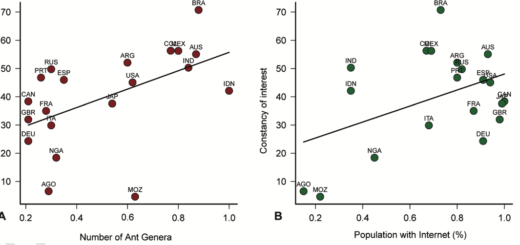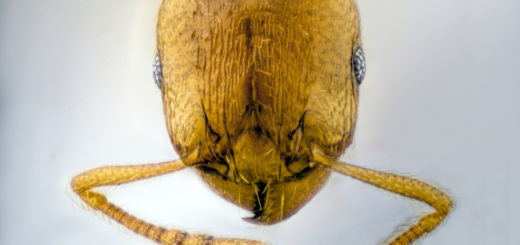Dispersal strategies in ants
In the recently published review article “Evolution of dispersal in ants (Hymenoptera: Formicidae): a review on the dispersal strategies of sessile superorganisms”, Sanja M. Hakala, Seppä Perttu, and Heiki Helanterä overview ant dispersal strategies and aim at identifying future research directions on ant dispersal and its evolution. Here, Kazuki Tsuji highlights their main points.
A View compiled by Kazuki Tsuji

Ant dispersal behavior shows different strategies between different species. Hakala & al. (2019) revised the literature on ant dispersal and proposed future study directions. The authors’ main aim is to understand ant dispersal behavior as a product of natural selection using an inclusive fitness approach. As they repeatedly point out, the biology of ant dispersal can involve complex trade-offs among life-history traits and conflicts among individuals and groups. They also correctly argue that our empirical knowledge of ant dispersal is surprisingly limited. To overcome this limitation, myrmecologists should raise hypotheses with explicit predictions, as suggested by the authors. Among multiple hypotheses they reviewed or proposed, the most impressive prediction is that ant dispersal should be male biased. The underpinning of this prediction is that, after dispersal on wings, females (gynes) need to establish their own colonies as reproductive queens which causes multiple trade-offs among traits used at different stages of their life. For example, increased fecundity can lead to a heavy body weight that may limit dispersal. In contrast, males are drones that die after the mating flight, suggesting that males are relatively free from such a trade-off and therefore can more easily optimize their flight ability. This general hypothesis can be applied to other eusocial Hymenoptera and subsocial insects with maternal brood care. I further extend this hypothesis by proposing that termites do not have a male-biased dispersal, because males also become reproductive kings after dispersal. We await empirical testing.
In the abstract and a later paragraph, the authors discussed the eco-evolutionary feedback concerning ant dispersal. I agree that this is a promising future direction. However, their scope is mostly limited to the single-species perspective, that is, interactions between genetic evolution and population ecology. I feel a little disappointed by the lack of interest in community ecology, that is, a multi-species perspective which is a common view in eco-evolutionary feedback studies in other organisms (e.g., Govaert & al. 2019). This lack of interest in ecology in Hakala & al. (2019) might have led to the neglect of our recent theoretical studies (Nakamaru & al. 2007, 2014) in which we tackled outcomes of intra- and interspecific competition of ants adopting different dispersal strategies. Furthermore, Tsuji (2013) pointed out a possible interaction between kin-selected evolutionary dynamics and community dynamics in ants. Sociobiologists should raise awareness for community and ecosystems for a better understanding of ant biology, since their social behavior must underpin their dominance in most terrestrial ecosystems.
References
Govaert, L., Fronhofer, E.A., Lion, S., Eizaguirre, C., Bonte, D., Egas, M., Hendry, A.P., De Brito Martins, A., Melián, C.J., Raeymaekers, J.A.M., Ratikainen, I.I., Saether, B.-E., Schweitzer, J.A. & Matthews, B. 2019: Eco-evolutionary feedbacks – theoretical models and perspectives. – Functional Ecology 33: 13-30
Hakala, S. M., Seppä P. & Helanterä H. 2019: Evolution of dispersal in ants (Hymenoptera: Formicidae): a review on the dispersal strategies of sessile superorganisms. – Myrmecological News 29: 35-55.
Nakamaru, M., Beppu, Y. & Tsuji, K. 2007: Does disturbance favor dispersal? An analysis of ant migration using the colony-based lattice model. – Journal of Theoretical Biology 248:288-300.
Nakamaru, M., Takada, T., Ohtsuki, A., Suzuki, S. U., Miura, K. & Tsuji, K. 2014: Ecological conditions favoring budding in colonial organisms under environmental disturbance. – Public Library of Science One 9: art. e91210.
Tsuji, K. 2013: Kin selection, species richness and community. – Biology Letters 9: art. 20130491.








Recent Comments